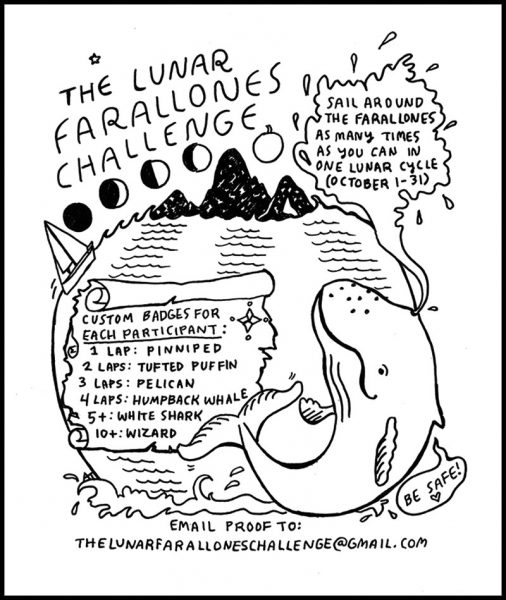
Out and About in Mexico
On September 9, we published a story about the effects COVID regulations and conditions are having on cruisers in Mexico. We know not everyone’s experience is going to be the same, but it’s always good to hear from people on the ground who can tell us what they’ve learned. Elinore Craig responded to our story with her thoughts on the cruising life in pandemic-affected Mexico, and we published her comments in this month’s ‘Letters’. In the meantime, Elinore sent us more information, so below is her original letter, plus the updates (and some fun pics).
“Here is a detailed description of life on the ground in the Bahia de Banderas, which straddles two states. We are living aboard s/v Nakamal in Marina La Cruz, which is north of Marina Vallarta and Paradise Village. We fly into Puerto Vallarta, Jalisco (where Marina Vallarta is), but our marina is in the state of Nayarit. Costco, Home Depot and the marine store, Zaragosa’s, are all in Jalisco. Consequently, since COVID became part of our daily lives, we have had to navigate the policies of two different Mexican states.
“As of late September, beaches are open in Jalisco, but not in Nayarit. In Jalisco you can go to a beach restaurant for a wonderful pescado zarandeado (fish taco) and launch your SUP from the beach. But the large family gatherings, beach volleyball, etc. are still not allowed. We are hopeful that more restrictions will be lifted in the next few weeks.
“Another local difference we’ve had to deal with is ley seca (dry laws) forbidding alcohol sales. The logic is that drinking leads to gatherings, gatherings lead to disease spread. Nayarit’s governor is more inclined to call ley seca around national holidays than Jalisco’s governor, so knowing when to stock up, or arranging a trip to the Costco in Jalisco, is part of the pandemic life we’ve learned to deal with. Note that usually the Nayarit government allows restaurants in the “tourist zone” to serve alcohol even during ley seca.
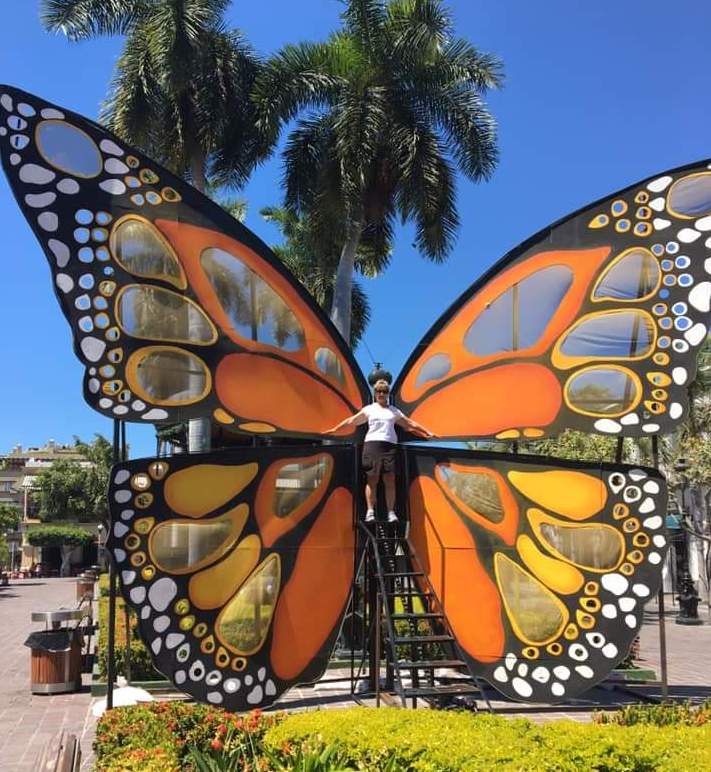
“Since the restart, we have been going to many different restaurants. Upscale eateries are following protocols to a “T”. You are likely to be greeted at the door, handed a facemask if you don’t have one, have your temperature scanned, then be asked to hold out your hands for a shot of sanitizer. More frequently, we find that the menus are provided via a QCR code and read on your phone. The same procedure is followed at the large, upscale shopping locales including grocery stores. Very few restaurants here are completely enclosed with air conditioning. We choose open-air seating whenever we can.
“At the less costly end, a visit to your local taqueria or street vendor requires no temp checks, and there is hand sanitizer available should you want it. Ditto local tiendas (neighborhood grocery stores).
“Tracking COVID numbers here is a crapshoot. For example, an expat couple I know were diagnosed based on symptoms and CAT scans, but never had a COVID test. They therefore aren’t in the official count (both recovered at home). Hospitals may report operating at 28% full, but that is based on total capacity — local COVID wards were reported as full a few weeks ago. So much like in the US, use the numbers to track trends, but be aware that the actual spread of the virus is much wider.
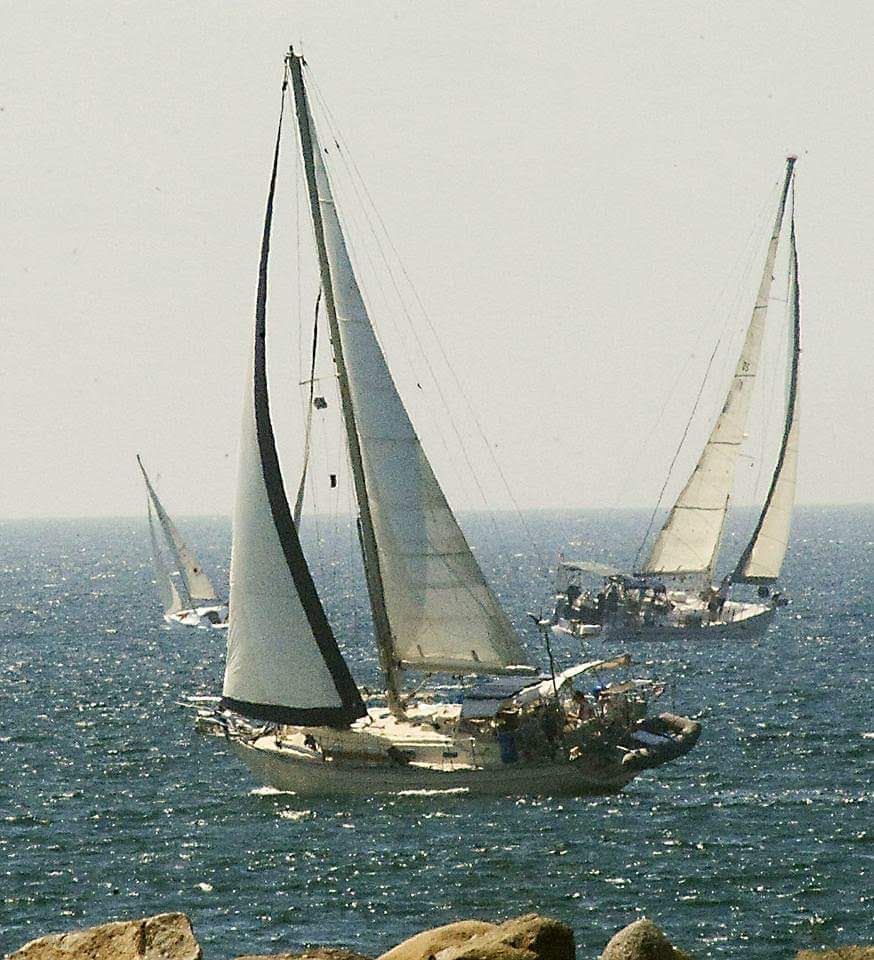
“COVID or no COVID, it’s good to have a plan for medical care — insurance coverage for the private care system. And if you are staying in one place for extended periods, ask around about clinics or doctors that people have used, BEFORE you need one. This advice is based on a non-COVID experience we had soon after arriving in Mexico, in 2015.
“Probably the biggest change in our summer lifestyle has been not taking the local buses. The combis/colectivos are a marvelous public transport system, but physical spacing is impossible on them. We have been walking, using taxis, sometimes Uber, and relying on the kindness of our car-owning friends. As the COVID numbers have been dropping lately, we’ve been taking buses for short trips as they are required to run with reduced capacity and open windows. The buses run so frequently that we can hop off and wait for another one if we feel uncomfortable.
“I just want to close by saying that life here is extremely manageable, if somewhat modified. The people continue to be friendly, welcoming, and grateful for our support. And it’s exciting to see preparations taking place waiting for YOU to arrive!”
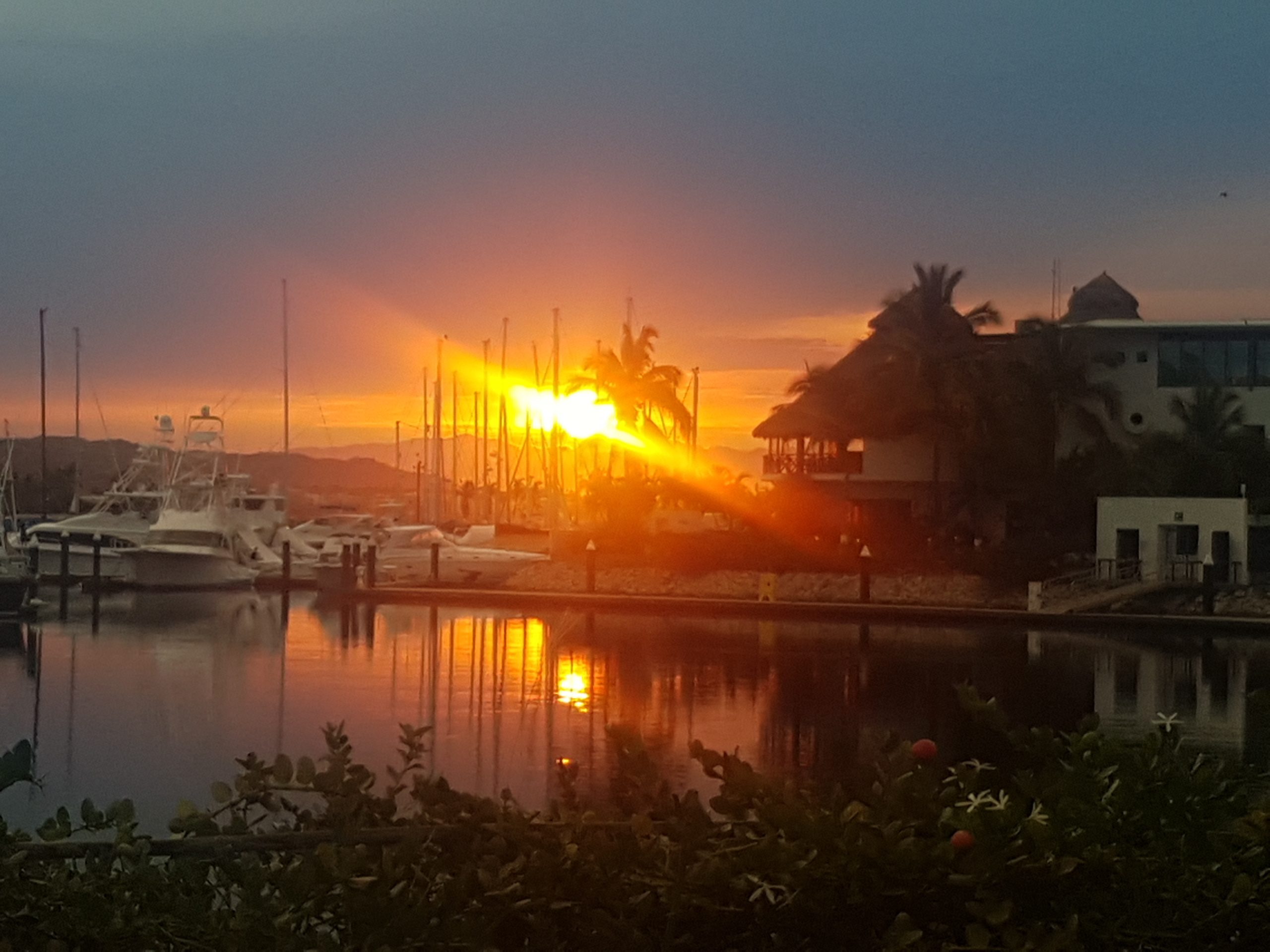
Elinore and her partner John Ryan call Tucson, AZ, home, but in 2014 they decided to “sell everything and live on a boat.” They found their sailboat, a 1999 Island Packet 380, in San Diego. After a month or so of interstate-shuffling, they became full-time liveboards on Christmas Eve. The following October they sailed to Mexico with the 2015 Baja Ha-Ha. Elinore says they are now “La Cruz summertime liveaboards, and high-season Gold Coast cruisers” — they spend summers in La Cruz de Huanacaxtle, then join the migration south to Tenacatita/Barra de Navidad for the winter high season, and north to Mazatlan/La Paz for spring high season.
“The reason we originally chose the Bay of Banderas area for our summer home is the natural hurricane protection that the bay and surrounding mountains offer. But after cruising to different areas, we have come to appreciate the variety of goods and services offered here, as well as the many options for first-rate healthcare,” Elinore added.
Fiji Regatta Week Kicks Off on Friday
Back for its 37th running, the annual Fiji Regatta Week at Musket Cove will kick off on Friday in western Fiji. Like almost every sailing event of 2020, the fate of this year’s regatta was uncertain until just a handful of weeks ago, when the organizers were able to set new dates and begin promoting the event. Scaled back from the normal week-long event that attracts around 100 yachts, this year’s regatta has been compressed to four activity-filled days for 40 to 60 boats. With boats ranging from a couple of small local racing multihulls under 30 feet all the way up to a former Whitbread maxi yacht and a former Vendée Globe racer, the 2020 Fiji Regatta Week may be smaller than normal but should be no less exciting.
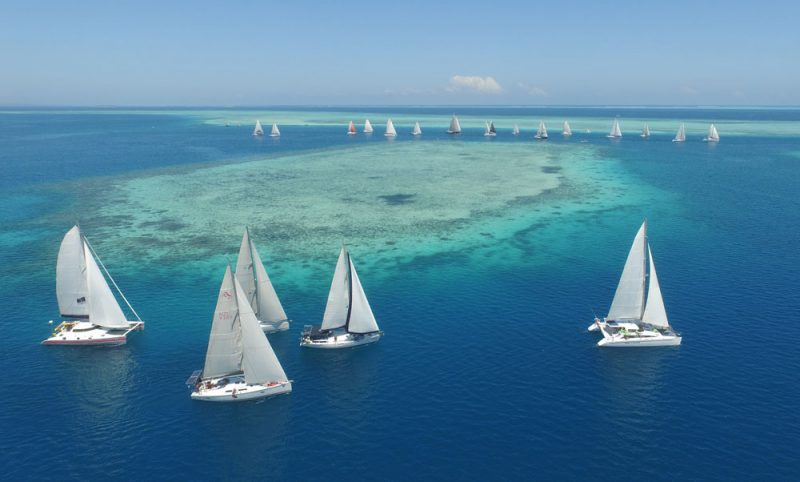
The quickest West Coast boat in Musket Cove right now looks to be Dr. Tom and Lynn Petty’s custom Wylie 60 Roxanne. When the boat was new, Tom raced it doublehanded to Hawaii in the Pacific Cup with Skip Allan before taking off on an extended family cruise that involved homeschooling their two children in New Zealand. Now, these former Moore 24 owners are excited to take on another Fiji Regatta Week at Musket Cove.
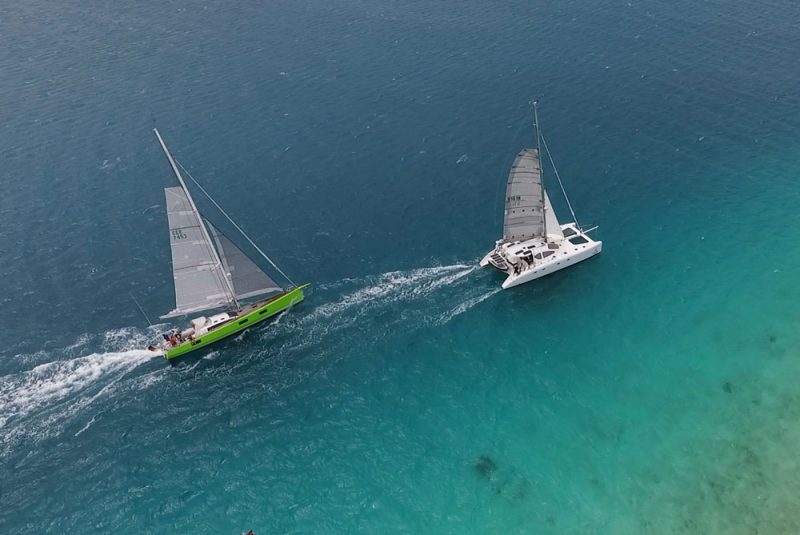
Other notable West Coast boats include Gregory Newman’s Berkeley-based Caliber 40 Rapture, a veteran of the 2018 Baja Ha-Ha. Back for another Fiji Regatta Week is San Diego’s Kurt Roll, a Ha-Ha and Transpac veteran himself, who is now based in Fiji on his S&S 37 Ellie. Formerly based in San Francisco but now a legal Fiji resident and local business owner, this writer and his Peterson 34 Quiver will be in attendance at the regatta. However, Quiver will stay off the racecourse as this writer is doing media work for the regatta. We’re sure there are many other interesting West Coast boats and owners participating in this year’s Fiji Regatta Week. We look forward to catching up with them throughout the week for a future article.
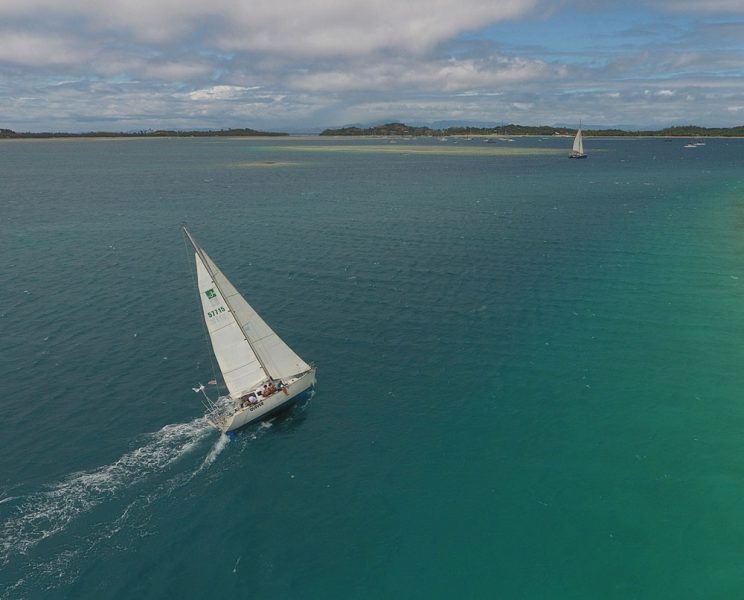
After a week of light, fluky winds and frequent showers due to a trough of low pressure situating itself over the South Pacific island nation, the southeast trades and sunny skies that the regatta is famous for should come back to play a starring role in 2020.
First up on Friday will be the first round of the Port Opua Hobie Cat Challenge in the inner lagoon before the first big boat race of the week, the Sandbank Race, typically a windward/leeward race of about 10 miles that involves navigating a tight reef pass before sailing to Namotu Island and back. Saturday, which also marks the 50th Fiji Day celebration to honor Fiji’s independence from British colonial rule, will include the second round of Hobie Cat match racing before the inaugural SUP Challenge in the Bay, a running race, and a pirate party in the evening. Sunday’s main event is the Marsden Cove Marina Around Malolo Classic. The event will finish on Monday with the Hobie Cat finals and a downwind SUP race from Namotu back to the island bar.
Look for a full recap next week after the regatta.
Step Up to the Lunar Farallone Challenge
Tall Ships Throwdown on Now
The year was 2020, and the world had gone mad. So what did sailors do? They used their determination, ingenuity and MacGyvering skills, and came up with creative ideas to keep their sails full. Galveston Historical Foundation and Tall Ships America have joined forces to present the ‘Tall Ships Throwdown’ — a week of virtual experiences surrounding several of the country’s historic vessels, culminating in Saturday’s ‘Tall Ship Throwdown Competition.’
The ships are coming together from across the country to present daily lectures and engage in good-natured competition, while raising awareness and funds for each vessel and its programs.
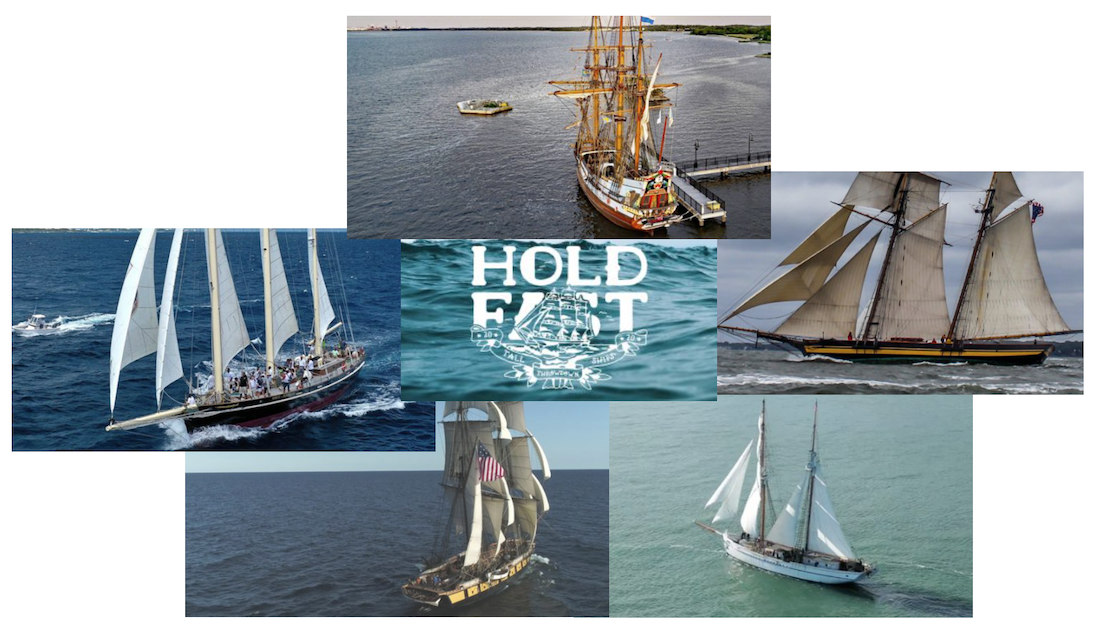
Participating ships include Pride of Baltimore II, EAGLE, American Pride, Exy Johnson, Alert, Irving Johnson, Spirit of Bermuda, Oliver Hazard Perry, 1877 Elissa, US Brig Niagara, Kalmar Nyckel and Sausalito’s Matthew Turner. Matthew Turner will participate in Friday’s sail-setting competition, on at noon, and crew will also conduct a tour and description of her hybrid regenerative propulsion system.
You can view the full schedule of free presentations and learn more about the event here. And don’t worry if you’ve missed any of the lectures that interest you; they’re still available online.
Then on Saturday the event heats up as the ships compete in the Creative Clash, Schooner Skirmish, Tall Ships Tussle, and Battle of the Barques.
The competition will be judged in three categories by an expert panel consisting of Rear Admiral James A. Watson IV (retired), director of the Bureau of Safety and Environmental Enforcement; Christina Hammock Koch, NASA astronaut; and Michael Rauworth, Tall Ships America president and board chair. You can imagine they will be tough and following rules to the letter!
Categories:
- Timed Sail Set Race: Each vessel is allotted a certain number of crew (determined by vessel size and class) and must set and douse three sails, depending on the heat. The time recording will be judged by an expert panel and posted throughout the day. Best time wins – with points awarded for style!
- Creative: The ships that don’t have sails bent on or enough crew are getting creative. This will be something to watch!
- Crowd Favorite: Ships that collect the most donations over the week will be determined the crowd favorite (and will raise necessary funds to support operations).
Tall Ships America is a nonprofit educational organization focused on youth education, leadership development and the preservation of the maritime heritage of North America.
Galveston Historical Foundation (GHF) was formed as the Galveston Historical Society in 1871 and merged with a new organization established in 1954 as a nonprofit entity devoted to historic preservation and history in Galveston County.
Orca Attacks Could Be Retaliation – or Stress
Of course! It’s 2020. Why wouldn’t orcas be ramming sailboats in the waters off Portugal and Spain? For the past several weeks our social media feeds have been reporting orca attacks. We all know not to believe everything we read on social media, but the 33 known incidents are being substantiated by multiple press agencies. So it must be true!
According to The Guardian, attacks have been recorded since at least late July. On July 29, biology graduate Victoria Morris was crewing aboard a 45-ft sailboat off the coast of Spain when a pod of nine orcas surrounded the boat. Morris, who had experienced orcas at play while she worked as a sailing instructor in New Zealand, initially believed the animals were behaving normally — “being lovely and playing around.” However her opinion changed quickly when the animals began ramming the boat’s keel and biting the rudder. Morris said the attack, which lasted over an hour, felt “coordinated.”
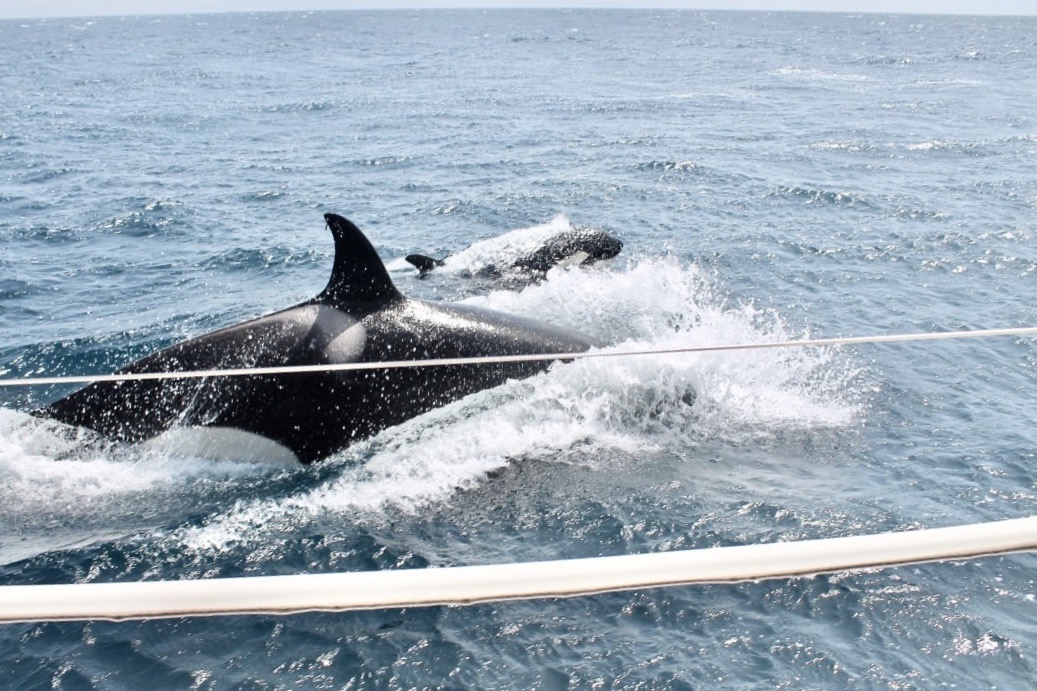
Earlier that day Nick Giles had felt the orcas’ wrath when they disabled the steering of his 34-ft boat. He described a “horrific bang ‘like a sledgehammer'” and said he felt his boat lift, and was then pushed around for several minutes. And on the previous night, British couple Beverly Harris and Kevin Large were aboard their 40-ft yacht that was “brought to a sudden halt, then spun several times; Harris felt the boat ‘raise a little’.”
Scientists are searching for explanations for the seemingly random attacks. Some are exploring the idea that the orcas are retaliating. A Gizmodo report says, “New research suggests the animals were likely wounded during previous encounters with boats and may be acting vengefully.” Other scientists question if the behavior could be due to “stress caused by a lack of food,” or simply annoyance at the return of boats to their waters, which had been quiet for some months due to COVID lockdowns.
If the orcas are indeed hungry, perhaps that would explain their habit of biting at rudders. BBC News reports that Scottish sailor Graeme Walker, his wife Moira and their friend Stephen Robinson felt the orcas attack their 48-ft boat before they saw them. The sailors told the BBC that the orcas persisted in their harassment for around 45 minutes, during which time the crew prepared their life raft. Walker said “The boat would literally spin through 90 degrees when the animals came in,” and described the wheel spinning from side to side as the animals bit and shook the rudder.
In the meantime, Spanish maritime authorities initiated a temporary ban on vessels of 15m (approx. 50-ft) or less for coastal sailing between Cape Prioriño Grande and Estaca de Bares Point in Galicia.
To date there has been no conclusive statement about the orcas’ intentions, and the theories of revenge and stress appear to be the most agreed-upon. Of course, there is the possibility that the offending animals are simply displaying an overabundance of youthful vigor and enthusiasm. Gizmodo further reports that experts are considering whether behavior is based on the orcas’ natural curiosity and suggest the orcas could find their actions satisfying, as they result in “a rather large object coming to a grinding halt or slowing down appreciably.”
Regardless of the reasons behind the orcas’ startling behavior, researchers agree it is potentially indicative of a problem that is endangering the already-dwindling species of this region — fewer than 50 remain.

